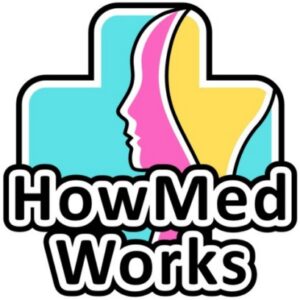
The journey to becoming a physician assistant (PA) is an exciting yet challenging one. As the admissions process becomes more competitive each year, it’s imperative that applicants approach their application with a strategic mindset and be proactive in covering all bases.
This article dives into the five best tips for applying to PA school that no one talks about. These are strategies that I learned when I was applying that made a huge difference. Simply put, just being aware of these few insights can set you apart from other candidates and greatly improve your chances of being accepted. Without further ado, here are the top five unconventional, but highly effective, strategies to get accepted into PA school.
Table of Contents
1. Know the Differences Between a PA, Doctor & Nurse.
Understanding the differences between the roles of PAs, doctors, and nurses is crucial. Not only will you need to answer the question “Why do you want to become a PA?” in your personal statement, but you’ll also be asked again by every program during interviews. Because of this, you’ll need to be crystal clear as to why you’re choosing PA over other healthcare roles.
PA vs. Doctor
To learn more about the similarities and differences between the roles of a PA and physician, be sure to check out my “Doctor vs. Physician Assistant: The Pros of & Cons of Each Career Path” article . There, I cover everything you need to know so I won’t repeat it all here.
. There, I cover everything you need to know so I won’t repeat it all here.
Just to paint a general picture, PAs and doctors are both trained using the medical model and can examine, diagnose, and treat patients. However, while doctors can practice independently, PAs must have a supervising physician. Another point of differentiation is that PAs generally take on lower acuity cases but tend to spend more face-to-face time with patients.
PA vs. Nurses
As we just discussed, PAs are trained using the medical model. Contrastingly, nurses are trained using the nursing model. Put simply, the medical model is more disease-focused, while the nursing model is more patient-centered. Take a look at this article for more information on the similarities and differences between PAs and nurses.
for more information on the similarities and differences between PAs and nurses.
When explaining why you’re choosing the PA path, remember to highlight the collaborative nature of the role and how it aligns with your passion for patient care. Showcasing your understanding of these distinctions will let admissions committees know that you’re a serious candidate. Overall, PA programs want applicants who demonstrate a strong understanding of the PA profession and have a comprehensive grasp of healthcare team dynamics.
2. Make Sure That Your Science GPA is 3.6 (or Higher).
When it comes to applying to PA programs, the importance of having a high GPA cannot be overstated. Under the “Requirements” section on PA program websites, you’ll typically find that only an overall GPA of 3.0 or higher is needed to apply. However, there’s an unspoken rule about GPA requirements that isn’t common knowledge to most PA school applicants.
What PA programs won’t tell you is that you need a science GPA of 3.6 or higher. This is the cumulative GPA of your hard science courses (e.g. anatomy, physiology, biology, chemistry, etc.). Classes that don’t contribute to science GPA are liberal arts (e.g. writing composition), psychology, sociology, and statistics, to name a few.
Overall, there’s a distinction between meeting the application criteria and being a competitive applicant. Even though your overall GPA matters, your science GPA matters more. Most PA programs won’t tell you this unless you specifically ask.
3. Log Everything Early.
Do your best to log all of your activities early. This includes patient care experience (PCE), healthcare experience (HCE), shadowing hours, research, extracurricular activities, and volunteer hours. You’ll want to document the activity, your role, dates, and total number of hours spent.
Pro Tip: If you’re unsure about what counts as PCE and HCE, then take a look at my “PCE vs. HCE: What Counts as Direct Patient Care Experience for PA School?” article. It provides detailed explanations and specific examples to help you distinguish between the two.
Don’t underestimate how long it takes to fill out the Centralized Application Service for Physician Assistants (CASPA ). The whole process is very tedious. However, having everything ready makes completing the CASPA infinitely easier.
). The whole process is very tedious. However, having everything ready makes completing the CASPA infinitely easier.
Moreover, by logging all of your activities in advance, you’ll increase the likelihood of submitting your application early. This is important because some PA programs utilize rolling admissions so the earlier you apply, the higher chance you have of getting an interview.
4. Join the AAPA.
Another valuable tip for applying to PA school is to join the American Academy of Physician Associates (AAPA). A Pre-PA Membership costs $50, and you can upgrade to a Student Membership once you become a PA student. A Student Membership remains active until you graduate.
Joining the AAPA is an easy way to show that you’re serious about becoming a PA. You can list your membership under the “Licenses and Certifications” section on the CASPA. Additionally, you’ll get exclusive access to resources like webinars, publications, and conferences, providing valuable insights into the profession and networking opportunities.
5. Network Before Getting Into PA School.
Finally, I strongly recommend networking before getting into PA school. Establishing connections with practicing PAs early on allows you to not only gather valuable insights into the profession but also build relationships that may be beneficial during and after your time in PA school.
For example, forming a relationship with a PA may lead to the opportunity of having them as a preceptor during your clinical year, providing a valuable mentorship experience. Furthermore, they could serve as a professional reference later on when you’re looking for a job.
Conclusion
Awesome job on finishing this article! Now that you know these hacks for navigating the PA school application process, you’re better equipped to stand out in the increasingly competitive admissions environment. 😀
For more help with the PA school application process, be sure to head on over to my “East Coast vs. West Coast PA Schools: Which is the Right Fit for You?” article , where I discuss the key differences between PA programs on either coast so you can decide which one better aligns with your application and career goals.
, where I discuss the key differences between PA programs on either coast so you can decide which one better aligns with your application and career goals.
Best of luck on your PA school application journey! As always, stay healthy and keep learning.
